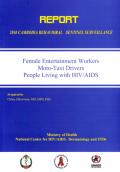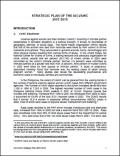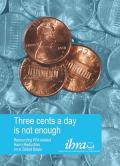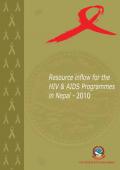What's New
Displaying results 3861 - 3870 of 4914

Resource | Publications,
The 2009-10 Timor-Leste Demographic and Health Survey (TLDHS) is the second national level population and health survey conducted in Timor-Leste and the first conducted as part of the global Demographic and Health Surveys (DHS) program. The sample for the survey was selected independently in every stratum, through a twostage selection process, to provide estimates for each of the 13 districts and for both urban and rural areas of the country. The 2009-10 TLDHS was designed to cover a nationally representative sample of residential households, taking into account nonresponse; to obtain completed interviews of women age 15-49 in every selected household; and to obtain completed interviews of men age 15-49 in every third selected household.

Resource | Publications,
In 2010, the eight round of Behavioral Sentinel Surveillance (BSS) has been conducted. The study was conducted in 5 main cities/provinces among female entertainment workers, moto-taxi driver and AIDS patients receiving care in the AIDS treatment centers. As results, the consistent condom use with paying clients and with sweethearts has remained relatively stable in the past five years among female entertainment workers who reported having more than 2 clients per day. Still, there are some indications of a slow but steady decline in consistent condom use, and this will need to be addressed in future prevention interventions.

Resource | Publications,
WR Carpenter Estates operates in an area of higher HIV prevalence in Western Highlands Province. The various tea and coffee estates are situated in proximity to and along the Highlands Highway and they employ large numbers of workers from the Highlands provinces. WR Carpenter Estates was invited as a prioritized site for national behavioural surveillance research by the National Department of Health and the NRI BSS team who collected the data that this report is based on in late 2008.
The data from this report creates a baseline to support NDoH national behavioral surveillance monitoring and trend data collection. The data also create a baseline for monitoring the NDoH/ADB HIV Prevention in Rural Economic Enclave Project with the WR Carpenters coffee and tea plantation workforce.

Resource | Publications,
A pilot rapid situation assessment was carried out in Thimphu by the Centre for Global Public Health (CGPH), University of Manitoba, Canada with the funding support from Government of Bhutan during October 2009 to January 2010. The overall goal of this assessment was to develop and test field methods designed to assess the location and nature of sexual behaviours and networks in urban settings in Bhutan.

Resource | Fact Sheets,
The Ministry of Health detected 29 new HIV positive cases across the country in the last one year, taking the total number of detected cases to 246 (122 females and 124 males). Most infected are between 25 to 39 years - the most economically productive age groups.

Resource | Publications,
The Democratic People’s Republic of Korea (DPR Korea) Multiple Indicator Cluster Survey (MICS 2009) was carried out in 2009 by the Central Bureau of Statistics (CBS) of DPR Korea with financial and technical support from the United Nations Children’s Fund (UNICEF). MICS is an international household survey programme developed by UNICEF. MICS provides up-to-date information on the situation of children and women and measures key indicators that allow countries to monitor progress towards the Millennium Development Goals (MDGs) and other internationally agreed-upon commitments.
MICS 2009 is part of the fourth global round of MICS surveys (MICS4). It follows the national nutrition survey in 2004 and previous MICS conducted in DPR Korea in 1998 and 2000. For the first time, MICS 2009 surveyed all 10 provinces of DPR Korea.

Resource | Publications,
Violence against women and their children (VAWC) occurring in intimate partner relationships in domestic situations is a serious problem. The World Health Organization (WHO) reports that half of the women who died from homicide were killed by their current or former husbands and partners. They succumbed to gunshot wounds, burns, hemorrhages and other physical injuries resulting from various forms of abuse. In the Philippines, the extent of VAWC can be gleaned from the varying trends in the number of general violence against women (VAW) cases from different government agencies. The number of VAW cases reported to the police increased seven-fold from 1,100 in 1996 to 7,383 in 2004.
Resource | Reviews and Snapshots,
The objective of the NASA report is to track HIV/AIDS spending from 2007 to 2009 from various sources of financing covering both public and external funds. The aim of this initiative is to inform policy-makers, program managers, and the donor community on the magnitude and profile of HIV/AIDS expenditures in the country and guide them in their planning and decision-making activities.
There is increasing trend in overall spending for AIDS from 2007 to 2009 in the Philippines. For the given period, most of the resources went to prevention interventions (65%), followed by program management and administration (19%), and care and treatment activities (7%). Key support from the country’s development partners range from service delivery interventions to technical assistance.

Resource | Publications,
People who inject drugs should benefit from the large increases in the global resources available for HIV. However, it is difficult to measure how much of global HIV spending actually goes into harm reduction. Although harm reduction is relatively invisible in national and international budgets, it is possible to calculate a plausible estimate of HIV-related harm reduction expenditure in low and middle income countries between 2007 and 2009. These results demonstrate the degree to which the international community is failing to address the issue of HIV among injecting drug using populations.
Despite the difficulties in identifying harm reduction expenditure, and of obtaining accurate estimates, there is no doubt that the overall volume of spending on HIV-related harm reduction is small.

Resource | Publications,
This study will enable the Government of Nepal, MoHP, national programme management entity namely HSCB and NCASC to track the influx of and distribution of resources from various donor agencies to HIV Programmes and assess the gap to meet the involved population coverage. This study complements the National AIDS Spending Assessment (NASA) which is more focused on the spending aspect of HIV response /programmes in Nepal.





